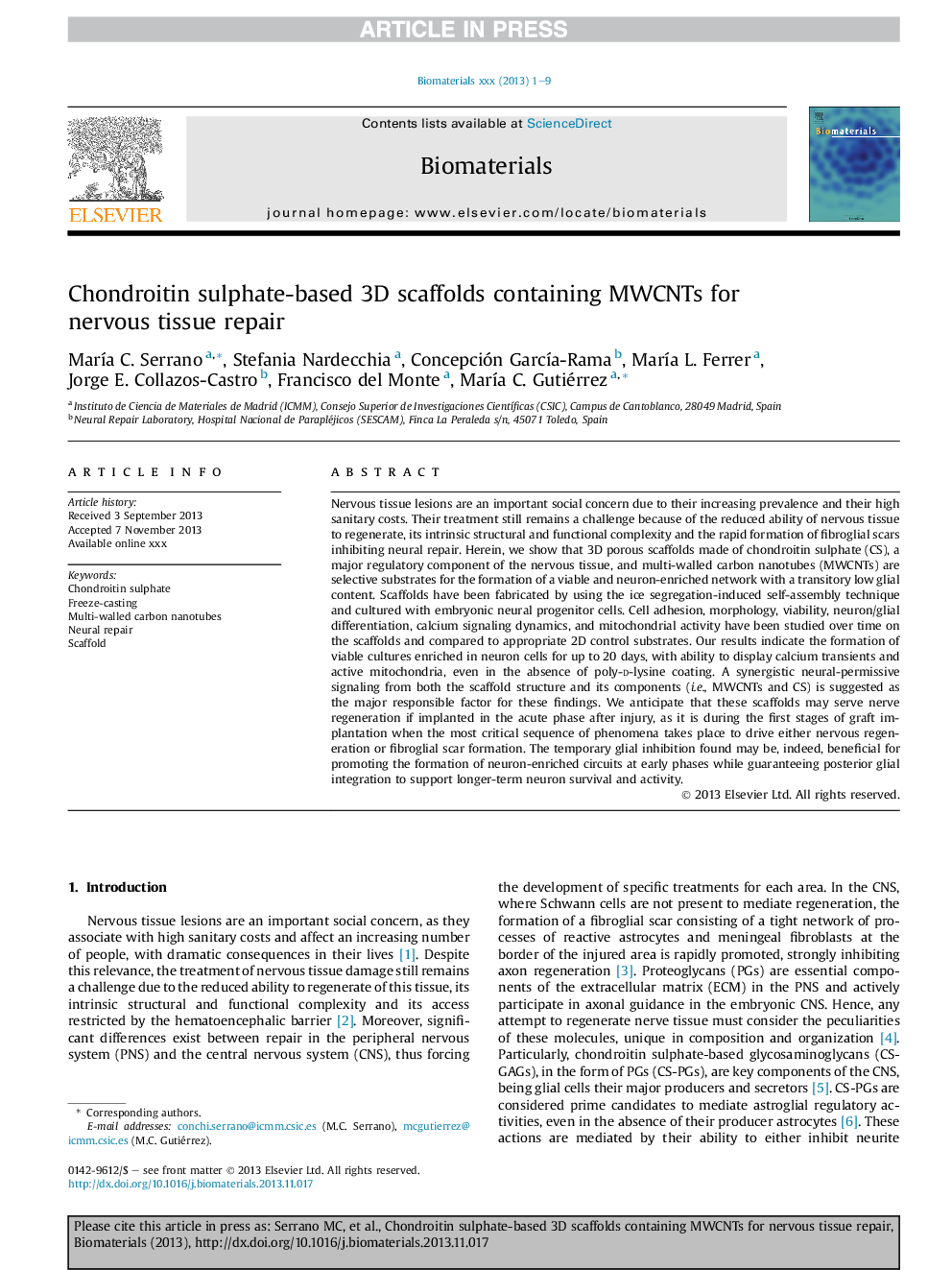| کد مقاله | کد نشریه | سال انتشار | مقاله انگلیسی | نسخه تمام متن |
|---|---|---|---|---|
| 10227444 | 446 | 2014 | 9 صفحه PDF | دانلود رایگان |
عنوان انگلیسی مقاله ISI
Chondroitin sulphate-based 3D scaffolds containing MWCNTs for nervous tissue repair
دانلود مقاله + سفارش ترجمه
دانلود مقاله ISI انگلیسی
رایگان برای ایرانیان
کلمات کلیدی
موضوعات مرتبط
مهندسی و علوم پایه
مهندسی شیمی
بیو مهندسی (مهندسی زیستی)
پیش نمایش صفحه اول مقاله

چکیده انگلیسی
Nervous tissue lesions are an important social concern due to their increasing prevalence and their high sanitary costs. Their treatment still remains a challenge because of the reduced ability of nervous tissue to regenerate, its intrinsic structural and functional complexity and the rapid formation of fibroglial scars inhibiting neural repair. Herein, we show that 3D porous scaffolds made of chondroitin sulphate (CS), a major regulatory component of the nervous tissue, and multi-walled carbon nanotubes (MWCNTs) are selective substrates for the formation of a viable and neuron-enriched network with a transitory low glial content. Scaffolds have been fabricated by using the ice segregation-induced self-assembly technique and cultured with embryonic neural progenitor cells. Cell adhesion, morphology, viability, neuron/glial differentiation, calcium signaling dynamics, and mitochondrial activity have been studied over time on the scaffolds and compared to appropriate 2D control substrates. Our results indicate the formation of viable cultures enriched in neuron cells for up to 20 days, with ability to display calcium transients and active mitochondria, even in the absence of poly-d-lysine coating. A synergistic neural-permissive signaling from both the scaffold structure and its components (i.e., MWCNTs and CS) is suggested as the major responsible factor for these findings. We anticipate that these scaffolds may serve nerve regeneration if implanted in the acute phase after injury, as it is during the first stages of graft implantation when the most critical sequence of phenomena takes place to drive either nervous regeneration or fibroglial scar formation. The temporary glial inhibition found may be, indeed, beneficial for promoting the formation of neuron-enriched circuits at early phases while guaranteeing posterior glial integration to support longer-term neuron survival and activity.
ناشر
Database: Elsevier - ScienceDirect (ساینس دایرکت)
Journal: Biomaterials - Volume 35, Issue 5, February 2014, Pages 1543-1551
Journal: Biomaterials - Volume 35, Issue 5, February 2014, Pages 1543-1551
نویسندگان
MarÃa C. Serrano, Stefania Nardecchia, Concepción GarcÃa-Rama, MarÃa L. Ferrer, Jorge E. Collazos-Castro, Francisco del Monte, MarÃa C. Gutiérrez,